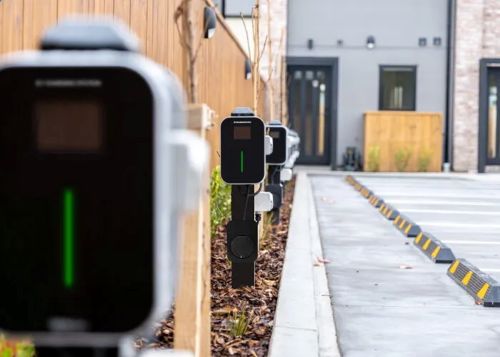


Understanding AC EV Charging: A Complete Guide What is AC Charging for Electric Vehicles?
Topper Company, a professional EV charger manufacturer in China, provides reliable electric vehicle charging stations and comprehensive solutions.
As electric vehicles (EVs) continue to gain momentum, the need for accessible and efficient charging options has never been greater. Among the available methods, AC (Alternating Current) charging stands out as the most commonly used solution for daily EV charging at homes, workplaces, and public areas.
AC charging refers to supplying alternating current from the power grid to an electric vehicle. Because EV batteries store direct current (DC), the vehicle’s onboard charger converts the AC into DC to charge the battery. This setup works seamlessly with standard electrical systems, making AC charging cost-effective and easy to implement in homes and businesses.
AC charging is typically offered in two levels:
Voltage: 120V
Speed: 2–5 miles of range per hour
Use: Plugging into a regular household outlet
This is the most basic form of charging, ideal for drivers with short commutes who can charge overnight.
Voltage: 240V
Speed: 10–60 miles of range per hour
Use: Homes, workplaces, and public stations
Level 2 requires a dedicated outlet or wall-mounted charger and is the preferred method for faster daily charging.
AC power is drawn from the grid.
EVSE (Electric Vehicle Supply Equipment) regulates and monitors power flow.
The onboard charger inside the EV converts AC to DC.
The battery stores the converted energy.
This method leverages existing infrastructure, making it widely compatible and affordable to implement.
AC charging is ideal in situations where your vehicle will be parked for an extended time:
At home overnight
While working from home or at the office
During errands at public locations
At commercial or residential parking areas
Modern AC EV chargers include key safety mechanisms:
Ground Fault Protection: Prevents electric shock
Overcurrent Protection: Avoids excessive current damage
Overtemperature Sensors: Prevents overheating
Surge Protection: Shields against lightning and power spikes
Auto Shutoff: Stops charging when the battery is full
Real-time Communication: Keeps charger and vehicle in sync
These built-in protections ensure user safety and protect both the EV and the power system.
Affordable: Low installation and maintenance costs
Battery-Friendly: Slower charging reduces stress on the battery
Widespread Availability: Found in homes, malls, offices, and more
Broad Compatibility: Most EVs support AC charging using a standard J1772 connector (in North America)
Slower Charging: Compared to DC fast charging, it takes more time
Power Limits: Even Level 2 chargers can take several hours to fully charge large-battery EVs
Possible Upgrades: Some homes may require electrical panel updates for Level 2 installation
AC charging remains the backbone of the EV charging ecosystem. It’s simple, cost-effective, and ideal for daily use at home and work. While DC fast charging is essential for long-distance travel, AC charging offers a practical, safe, and accessible solution that supports the ongoing transition to electric mobility.Know more about Google SEO Directory
